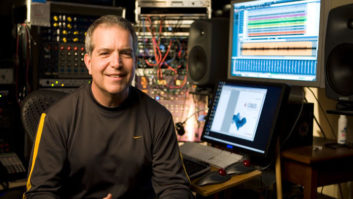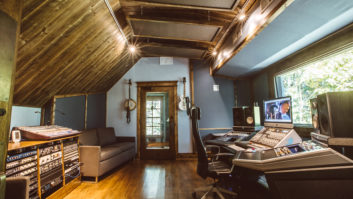Twenty years ago this month, a quiet revolution began. Standards never come easily, but after years of backroom meetings between U.S. and Japanese manufacturers, the Musical Instrument Digital Interface (MIDI) was first publicly demonstrated to the public at the 1983 Winter NAMM show.
MIDI had its beginnings two years earlier, when Sequential Circuits founder Dave Smith — based on his meetings with visionaries such as Tom Oberheim and Roland’s Ikutaro Kakehashi — presented a paper at the 1981 New York AES for USI, a Universal Synthesizer Interface. USI proposed a common note-on/note-off communications protocol between electronic instruments from different manufacturers. Meanwhile, similar efforts were under way by Japanese manufacturers (notably Roland, Yamaha, Korg and Kawai), and, in a rare example of insight and cooperation, U.S. and overseas companies began working together to refine USI into the more powerful MIDI standard.
There were other synth-control systems available at the time, ranging from the limited scope of simple control voltage and gate schemes to the elaborate Oberheim System, which combined that company’s proprietary sequencer with its drum machines and synths. However, no other protocol offered the depth and universal compatibility of what has become known as MIDI.
At NAMM in January 1983, Dave Smith used a Sequential Prophet-600 to control a Roland Jupiter-6 synth. At the time, no one imagined the importance of this event.
As computers became affordable and more powerful, MIDI became a staple in studios, along with growing racks of keyboards, drum machines, sequencers and samplers. Soon, control rooms themselves were expanded to house all of this performance gear and provide a central nest to create entire works. Low-cost synchronizers (SMPTE and FSK) locked MIDI tracks to multitracks, leading to the concept of the project studio.
As time went on, the MIDI spec continued its evolution, adding features such as MIDI sample dump, MIDI time code (MTC), MIDI show control, MIDI machine control (MMC) and the flexibility of system exclusive (Sysex) messages that allow manufacturers to “personalize” MIDI control to suit any particular piece of hardware.
Another offshoot, General MIDI, standardized the assignment of MIDI channels to particular instruments and — combined with the universally readable sequences contained in standard MIDI files — opened the door for the widespread use of MIDI in computer games, multimedia, karaoke and Internet applications.
Combining MIDI-sequencing capabilities with DAWs allowed musicians to edit and manipulate vocals and acoustic instruments in the same manner as MIDI tracks, but also provided new avenues of creative exploration, especially in the area of effects automation.
The forays of MIDI into the consumer arena were far less successful — does anybody even remember the 1988 CD+MIDI format? Yet even on the MI/pro side, MIDI has had many critics, calling for the creation of a faster, wider-bandwidth MIDI-2 spec; but so far, nothing’s materialized. Now, 20 years later, MIDI is still with us. Standards never come easy, and an entire industry owes a debt of thanks to the hard work of many individuals and manufacturers who contributed to MIDI’s birth, growth and expansion.
Happy Birthday!






